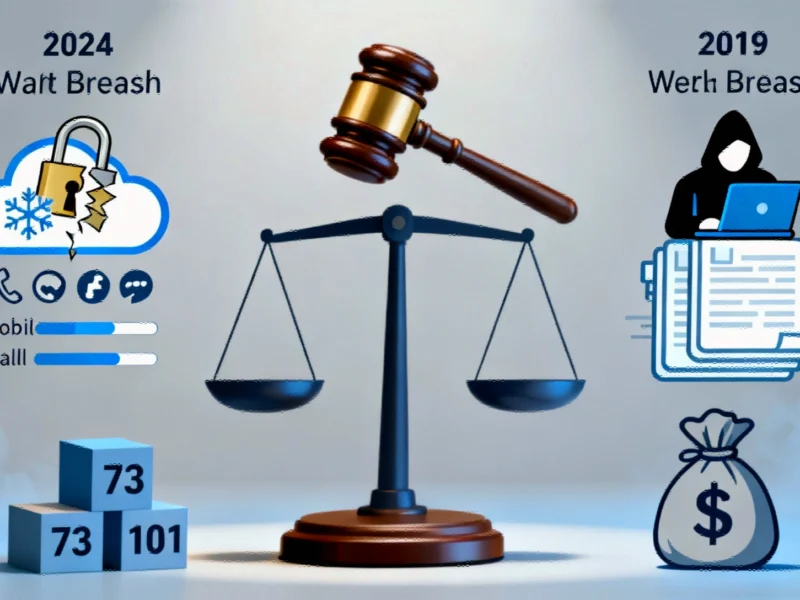Critical Infrastructure Under Digital Siege
In a significant escalation of the ongoing cyber conflict between world powers, China has formally accused the United States National Security Agency (NSA) of conducting sophisticated attacks against its National Time Service Center. The facility, which provides critical timing synchronization for China’s communications, financial systems, power grid, transportation networks, and defense infrastructure, represents what cybersecurity experts describe as a foundational component of national security.
According to a detailed post from China’s Ministry of State Security on WeChat, the NSA allegedly exploited vulnerabilities in a mobile phone brand’s messaging services back in 2022 to infiltrate the personal devices of National Time Center employees. The ministry claims this initial breach enabled subsequent attacks using 42 distinct types of specialized cyber weapons designed to disrupt internal network systems and compromise key timing infrastructure between 2023 and 2024.
The Strategic Importance of Time Synchronization
The targeting of time synchronization services represents a concerning evolution in state-sponsored cyber operations. “Time synchronization is the invisible backbone of modern civilization,” explains Dr. Elena Rodriguez, a cybersecurity researcher specializing in critical infrastructure protection. “Disrupting these systems could potentially affect everything from financial transactions to power grid stability and military coordination.”
China’s National Time Service Center operates the country’s primary time standard, which synchronizes systems across the world’s second-largest economy. The precision timing services are particularly crucial for 5G networks, satellite navigation, banking transactions, and electrical grid management. Recent industry developments in industrial computing have highlighted the growing importance of secure time synchronization across critical infrastructure sectors.
Pattern of Mutual Accusations
The Chinese allegations come amid an ongoing cycle of reciprocal accusations between Washington and Beijing. The Ministry of State Security statement explicitly criticized what it characterized as American hypocrisy: “The U.S. is accusing others of what it does itself, repeatedly hyping up claims about Chinese cyber threats.”
These claims emerge against a backdrop of multiple US allegations against Chinese cyber operations. In 2024 alone, American authorities have attributed several significant breaches to Chinese actors, including what the FBI described as the “worst in nation’s history” telecommunications hack and intrusions targeting US government agencies including the Treasury Department. The continuous back-and-forth accusations reflect what security analysts describe as an escalating digital cold war between the two technological superpowers.
Technical Sophistication and Response
According to the Chinese ministry, the NSA’s campaign demonstrated remarkable technical sophistication, employing dozens of specialized cyber weapons specifically designed to evade detection and persist within targeted systems. While the public statement did not provide specific evidence, Chinese authorities claim to have identified and contained the threat through comprehensive security enhancements.
The incident highlights the growing importance of robust cybersecurity measures for critical infrastructure. As organizations worldwide face increasingly sophisticated threats, related innovations in secure computing platforms and threat detection systems have become essential defensive tools.
Broader Implications for Global Cybersecurity
This latest accusation adds another layer to the complex relationship between the world’s two largest economies. The targeting of time infrastructure represents a concerning precedent in state-sponsored cyber operations, potentially encouraging similar attacks against critical synchronization systems globally.
Security professionals note that the incident underscores the need for international norms regarding cyber operations against critical infrastructure. As detailed in our comprehensive coverage of China’s allegations, the situation reflects broader tensions in US-China technological competition.
The cybersecurity landscape continues to evolve rapidly, with both nations developing increasingly sophisticated capabilities. Recent market trends indicate growing investment in defensive technologies across both public and private sectors as digital infrastructure becomes increasingly contested territory.
Future Outlook and Preventive Measures
Following the discovery of the breach, Chinese authorities implemented enhanced security protocols and provided specialized guidance to the National Time Service Center to prevent future incidents. The response demonstrates the critical importance of rapid detection and containment capabilities when dealing with advanced persistent threats.
As nations grapple with these complex challenges, researchers are looking to unconventional sources for security inspiration, including nature’s blueprint for resilient systems. The ongoing digital standoff between major powers suggests that similar incidents will likely continue as technological competition intensifies, requiring continuous advancement in both offensive capabilities and defensive measures.
The incident serves as a stark reminder that in our interconnected world, no critical system can be considered entirely safe from digital intrusion, and the protection of foundational infrastructure requires constant vigilance and international cooperation.
This article aggregates information from publicly available sources. All trademarks and copyrights belong to their respective owners.
Note: Featured image is for illustrative purposes only and does not represent any specific product, service, or entity mentioned in this article.



